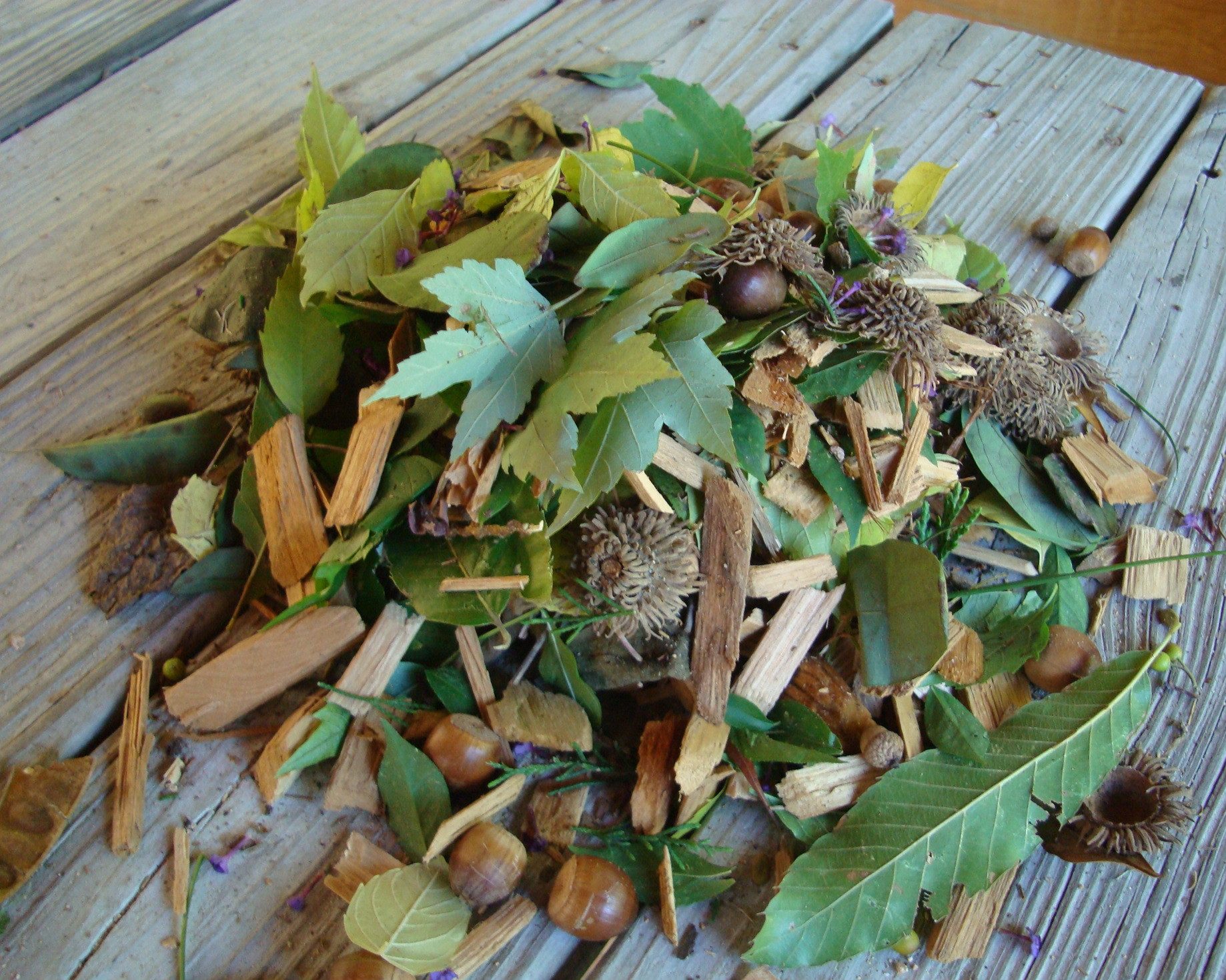Each of the activities require a large collection of natural materials. (The activities are all taken from the International School Grounds 2015 Activities Guide)
 |
| Natural Learning Initiative |
The Secret Picture
This curriculum-connected activity helps children (or adults) practice cooperation and communication skills in a relaxing outdoor setting while also improving their vocabulary for mathematical and spatial terms, and also concepts such as 'over', 'under', 'below' and 'beside'.
Conduct this activity in a school yard rich with natural materials such as stones, leaves, flowers, pine cones, branches, etc.
Directions:
- Divide your group into pairs. Ask every pair to collect two sets of natural materials: for example, three black stones, two small leaves and a flower.
- Now the pairs should sit down with their backs against each other.
- One of the children in each pair uses his or her own set of objects to create a pattern or picture of his or her choice.
- After this, it is time for the other child to recreate the same pattern or picture only by taking verbal instructions -no peeking!
- When the pair thinks they have finished, they turn around and check if the pattern came out correctly.
- What similarities and dissimilarities are there? Were the instructions easy or difficult to understand? What could be improved upon?
- The best part: Everybody wins!
The ABC Mat
In its simplest form, this curriculum-connected game teaches young children about the alphabet and helps them to work on their language and spelling skills. For older children, teachers can modify this activity to teach more complex grammar lessons or practice foreign language skills. The game also helps pupils tune in to the natural world around them.
Materials:
- ABC mats, showing the alphabet, with letters in fouror five rows, as shown above. These mats can be hand-drawn and made from a large sheet of paper.
- A collection of materials from the natural world such as stones, leaves, flowers, pine cones, etc.
In the playground or woods, lay out a mat on the ground that shows the letters of the alphabet. The aim is for pupils to notice the details of their surroundings. A normally insignificant stone can now grace the “S” on the ABC mat and a bit of moss can now proudly take its place on the “M”. Pupils scan the area and try to name both small objects and large objects in their hunt for the correct first letter.
Divide the class into groups of three to five. Each group is given an ABC mat. They must find an object for each first letter. This activity can be made into a competition, where each letter of the alphabet gives one point and where the teacher sets a limited amount of time, for example, ten minutes.
Variations:
Groups receive two points for each object they can be more specific about: for example, a leaf on the “L” receives one point, whereas a maple leaf on the “M” receives two points. You can, of course, play bingo using the ABC mats.
The activity can be repeated with slight changes:
• collect nouns, adjectives or verbs
• collect opposites
• collect species (for example, not just a leaf but a maple leaf, not just berry but a serviceberry)
• allocate points for synonyms: one point for the word “leaf”, two points for the word “foliage”
• collect objects that rhyme
Robert's Little Finger
This activity teaches ratios and collaboration. Students work together construct a scale model of a member of their group. This activity can be further extended by asking students to collect twigs of a variety of sizes before the activity begins.
Materials:
many twigs, from 2-20cm long (see if anyone has pruned their fruit trees)
Flowers or other small, natural elements for making faces for the stick figures
Directions:
- Divide pupils into groups of about five.
- One pupil from each group must take one of the twigs.
- Now each group must use the remaining twigs to create a model (stick figure) of the group member who took the single twig. The single twig represents that group member’s little finger.
- Pupils create the model on the ground and must decide on the proportions of their model. When each group has finished, they must guess the scales used by the other groups. If the pupil’s little finger is 4 cm, with a twig that is 2cm, the scale is 1:2. With a twig that is 20 cm, the scale is 5:1.